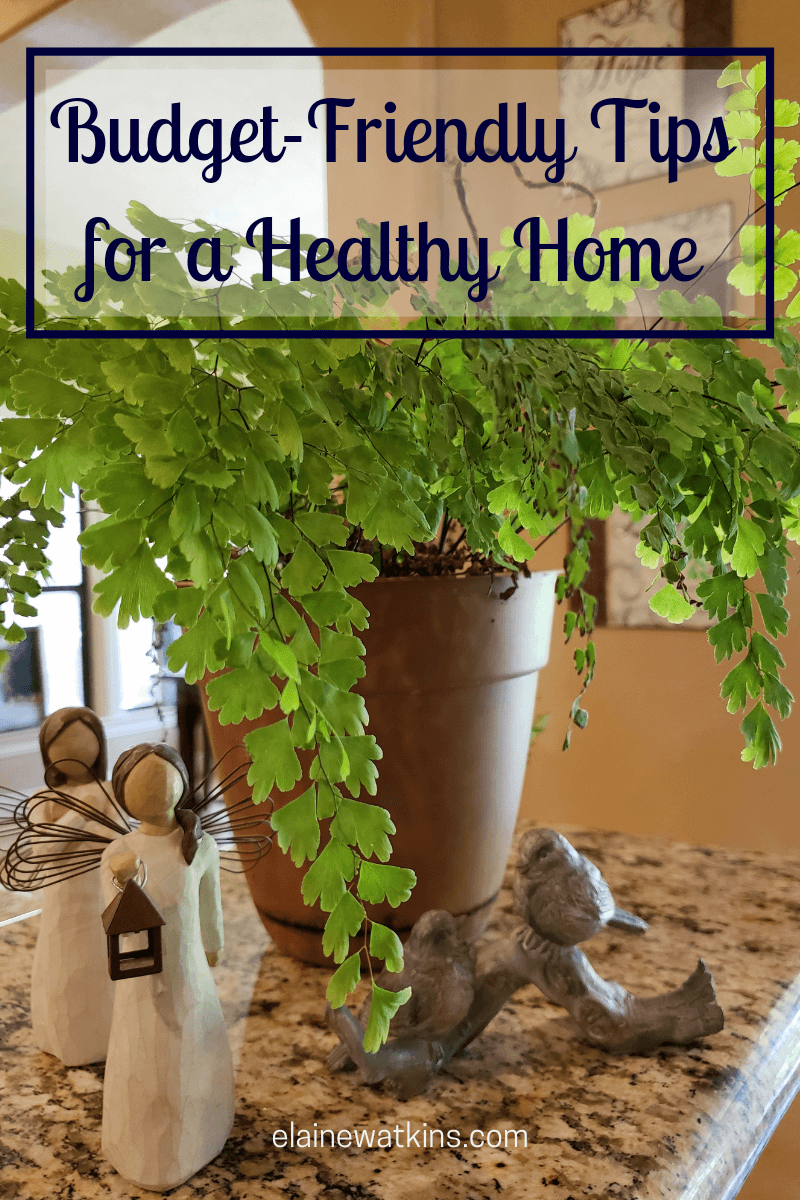Budget-Friendly Tips for a Healthy Home
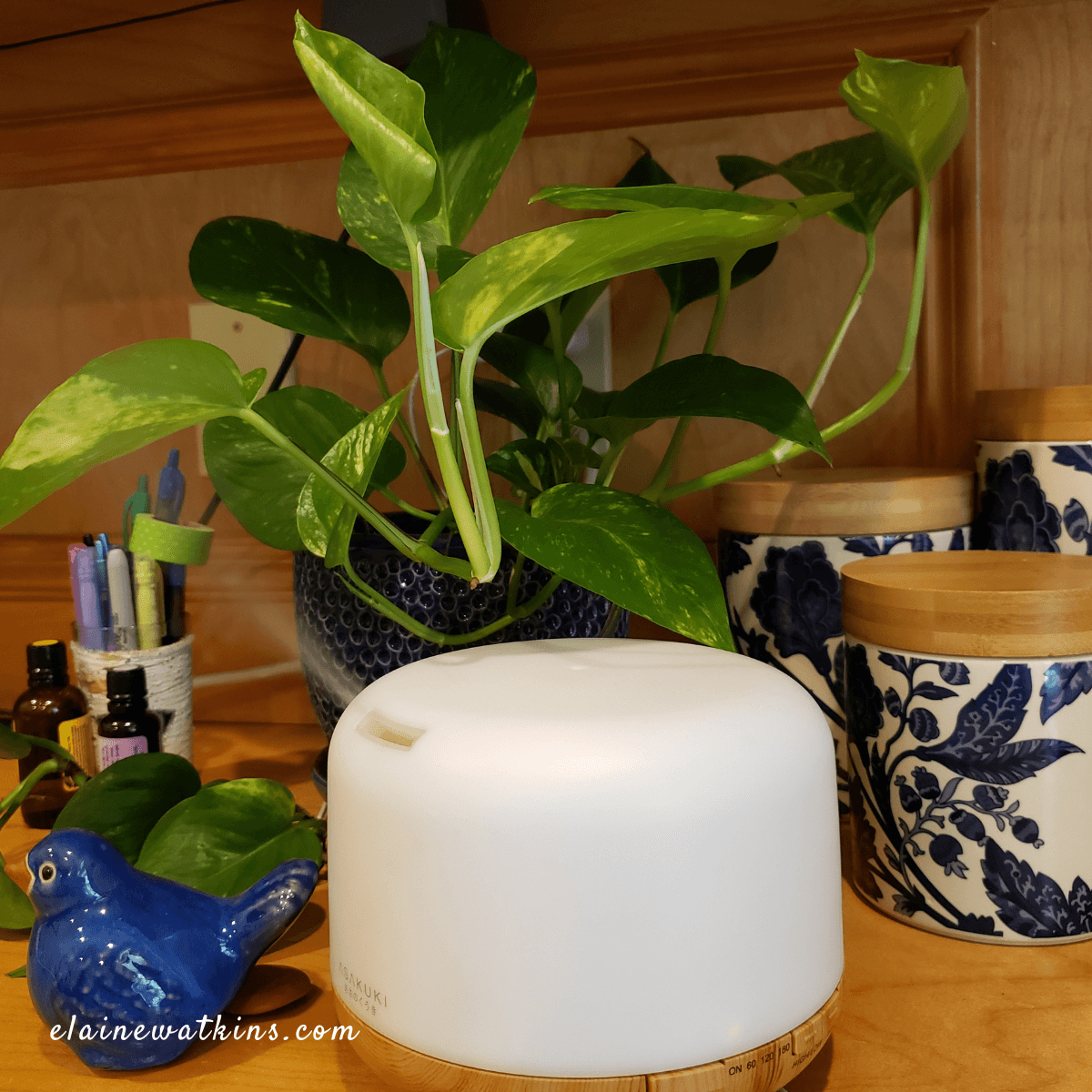
I love when there’s something that I can do to improve my family’s health without spending a ton of money. And because we all spend a good amount of time at home, I’m always looking for budget-friendly tips for a healthy home.
One of the easiest and quickest ways I’ve found to do this is simply looking at what I’m currently doing and then looking for ways to clean up my current choices and processes to either eliminate a problem or add a support.
If you’re goal is similar to mine, then you might like the changes I’m spotlighting today.
In this article:
- A Quick Clarification
- Air Fresheners and Scented Candles
- Home Cleaners
- Fresh Air
- Indoor Plants
- Outdoor Shoes
- Detoxing Our Home
- What Can You Do?
It’s not a totally exhaustive list of All The Things you can do, and I’m really trying to focus changes that either won’t cost money or could roughly equal what you might already be spending on something else.
Just to Clarify
Before I launch into this budget-minded collection of healthy changes, there’s two terms that get used in a way that assumes they are synonymous, but they’re actually not and that understanding might be helpful in your journey:
- Toxins, the term commonly used, are toxicants that are produced naturally by organisms (bee stings, etc.)
- Toxicants, which includes toxins, are toxic substances that can be man-made or naturally occurring (bee stings but also flame retardants in fabrics and Roundup, etc.)
When we’re talking about the chemicals that are added to our water, sprayed on our food, released into the air, and added to our cleaning products, we’re talking toxicants.
As You Incorporate Healthy Changes
On any given day, we’re bombarded with toxicants that effect our health and happiness. Cumulatively, they can wreak havoc on our bodies and lead to all kinds of problems including:
-
- heart problems
- skin irritations
- respiratory problems
- sexual dysfunction
- liver and kidney damage
- eye irritation
- digestion problems
- menstrual cycle problems
- cell damage
- hormone imbalances and cascading struggles
- headaches, dizziness, anxiety, and other brain challenges
- unconsciousness and coma
Just a sampling of common chemicals you might be exposed to along with a sampling of where they are include:
- Formaldehyde – paper towels, plywood, nail polish, synthetic fabric, and paper bags
- Benzene – tires, plastics, dyes, detergents, glue, pesticides, furniture wax, nylon, processed foods, cigarette smoke, paint, car exhaust
- Ammonia – in window cleaners, baked goods, floor waxes, fertilizers,
- Phthalates – nail polish, raincoats, soap, plastic containers, lubricants, shampoo, plastic wraps
- Parabens – processed foods, makeup, medications, moisturizers,
- Flouride – many local water districts, medications, processed foods, mouthwash, Teflon pans, toothpaste
- Hormone Disrupting Chemicals – tap water; plastic bottles, cup lids, containers and more; personal care products, store receipts, CDs, safety equipment, toys, cans
So let’s take a look at those budget-friendly tips for a healthy home.
Air Fresheners and Scented Candles
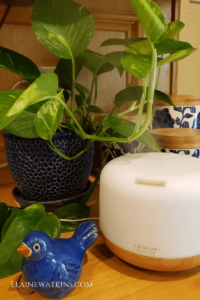 Whether plugged in your car, flickering in your office, sprayed in your privy, or diffusing throughout your home, air fresheners and candles can add a delightful scent to an area.
Whether plugged in your car, flickering in your office, sprayed in your privy, or diffusing throughout your home, air fresheners and candles can add a delightful scent to an area.
But what makes up that scent? Have you checked out the label?
Of the 300 products from 32 air freshening brands that the Environmental Working Group evaluated recently, 73.4% (220) were scored at a D or F (failing) level, meaning high or highest concern of likely to potentially significant hazard to health or environment and poor ingredient disclosure.
Translation: Three-fourths of the commonly used air fresheners on the market are a health hazard and do a pitiful job of telling you the ingredients included.
You have a similar challenge with candles. Aside from the fact that many candle brands don’t include a label fully disclosing ingredients, oftentimes your typical candle is made with paraffin, which has been linked to tumor growth and other challenges.
Now if you just pause a moment to think about the number of places that you spend time in and how many of those have air fresheners and candles of some sort in use. We’re particularly focusing on our homes in this post, but this one might also apply to other areas that you control:
- your car
- your personal work space
Of course you could always choose to go without any purchased air fresheners or candles at all. Definitely a very easy and budget-friendly way to lower the toxins you and your family might be regularly exposed to.
But if you really enjoy beautiful scents, then consider:
- air fresheners and candles with better and fewer ingredients
- switching to diffusing essential oils
You can check out the air freshener’s section of the EWG’s guide for information before buying again, and there are cleaner candle options too such as beeswax candles with essential oils scents.
We’re usually diffusing some combination of essential oils somewhere in the house. The fact that I can make oil choices based on our current needs and preferences is a nice benefit, whether I’m wanting something that’s soothing or energizing.
You can get diffusers just about Everywhere. Check out my Essential Oils post for more information including essential oils and related tools.
Cleaners for Your Home
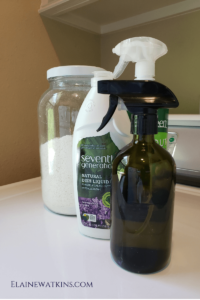 I grew up Loving the smell of freshly bleach-cleaned counter tops, dishes, bathrooms, and more.
I grew up Loving the smell of freshly bleach-cleaned counter tops, dishes, bathrooms, and more.
Also I never really considered it a problem back then when I had to deal with respiratory issues that periodically resulted.
Not sure why I didn’t recognize that it wasn’t something to trivialize.
Nowadays I either make my own safer DIY cleaners, or I buy cleaner brands that aren’t harmful.
When making my cleaners, my normal go-to ingredients include:
- vinegar (distilled)
- baking soda
- herbs and essential oils (including lemon, lemon myrtle, peppermint, tea tree, sweet orange, some anti-microbial/bacterial blends, etc.)
- castile soap (I like Dr. Bronners)
I LOVE that I save loads of money making my own, and I’ll be sharing a few of my personal cleaning recipes on the blog soon.
In case you’re not wanting to make your own, two store-bought cleaner options that I use are:
- Seventh Generation
- BioKleen
Open the Windows
This is definitely one option that just seems too simple to make a difference, and, of course, you’ll need to consider things like:
- your unique living situation
- location
- time of year, day, and current weather
The paints, glues, flame retardants, and so much more that can off-gas from your walls, floors, and furniture can build up in your house. Instead of including those in the air you are regularly breathing, look for ways to get that out and fresh air in.
A day that includes a gentle breeze is practically perfect, when combined with you turning off air conditioners and turning on your indoor fans to get the air moving. It probably can go without saying that you shouldn’t do this when all the trees are releasing their yellow clouds of pollen or you’re in the midst of a freezing blizzard, but this can be a great way to refresh the air in your house, car, and maybe work too with practically no cost.
Be selective about which windows you open if the front of your home faces a high traffic, dusty street or your back windows don’t have screens.
Add plants
Besides just being fabulously pretty, plants can inspire a peaceful environment while also lending their air-purifying benefits to your home or work space.
Yes. Basically they’re working to produce oxygen and/or absorb some of those problem chemicals we talked previously. Some of the best plants for inside and for absorption that you might like include:
 dwarf palms
dwarf palms- ferns
- aloe vera
- dracaena
- ficus
- peace lily
- fiddle leaf fig
- orchids
- spider plant
- succulents
- pothos
- ivy
- snake plant
Depending upon the plant, toxins such as formaldehyde, toluene, benzene, acetone, and trichloroethylene can be reduced, while you get a little nature indoors.
Remove Your Outdoor Shoes
This might be another simple change for most.
Think about everywhere you walk during the course of a typical day. Maybe:
- the gas station
- grocery store
- doctor’s office
- work
When you walk into your home, all that stuck to your shoes is walking in with you.
So what about just taking off your shoes and leaving all that at the door and, subsequently, minimizing the amount of toxins that are tracked into your house.
Your house where everybody lives, sleeps, and laughs can simply cease to harbor some toxins (or at least drop the level) picked up when everybody was out and about during the day.
This one is relatively easy for me personally, since I prefer being barefooted and am already kicking off my sandals in a hot minute after coming home. But sometimes I’m trying to carry all 42 grocery bags plus my purse and water bottle into the house in one trip, or someone else in the family that wears leg braces or uses a walker or wheelchair are heading in and this one is really just too much to ask.
Hey. We’re still minimizing with what we can do.
Detoxing Our Home
We are continuing to make changes to reduce toxins in our home, and at this time we:
- ditched all air fresheners and now diffuse essential oils daily
- put away the candles except as a last resort emergency lighting option
- make most of our cleaners with cleaner ingredients but access a few cleaner brands given for certain items
- open the windows at least once a quarter and more frequently in the spring and fall
- enjoy several plants in the house
- succeeding to a degree with leaving shoes at the door
One, adding plants, is something I’ve always really wanted to do. Now knowing of the beneficial impact of adding indoor plants has been just what I needed to make this beautiful change.
Another, opening the windows, was something we did randomly on gentle weather days to bring in the fresh smells and sounds of of our rural area. Now we open up the house more frequently for those same benefits but also knowing we’re setting up a healthy indoor environment. 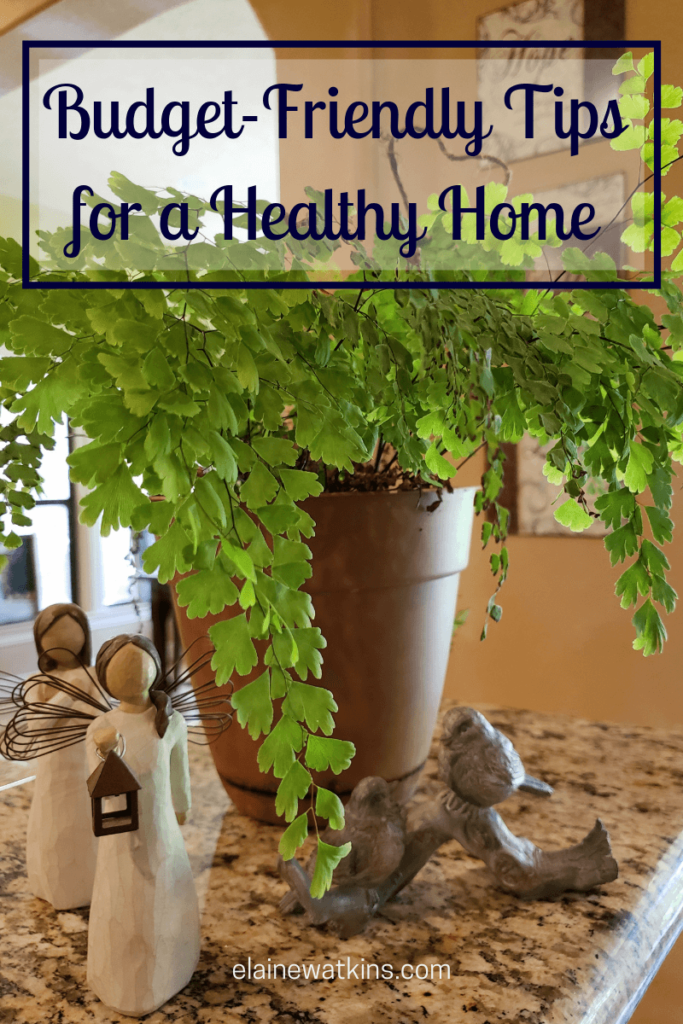
To Summarize Those Budget-Friendly Tips for a Healthy Home
Making healthy choices doesn’t have to be complicated, and every step you take is progress.
I’m still amazed at how simple yet impactful these 5 changes can be, whether:
- replacing/eliminating air fresheners and candles
- changing your cleaner choices
- opening your windows
- adding plants
- removing shoes
Maybe you’re already doing all of these, but if not, I hope that as you read this, you’re already thinking about you can change.
If you do decide to make changes, definitely let us know. We’d love to hear about them.
